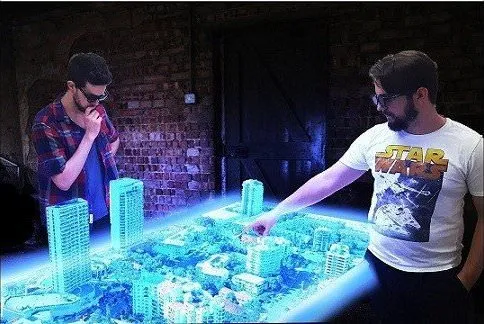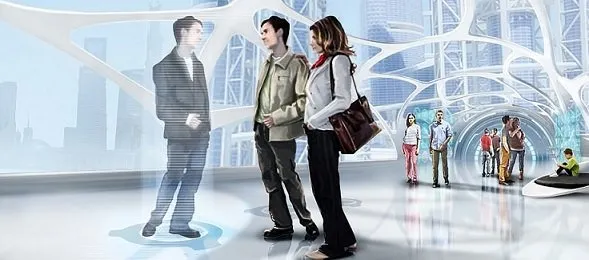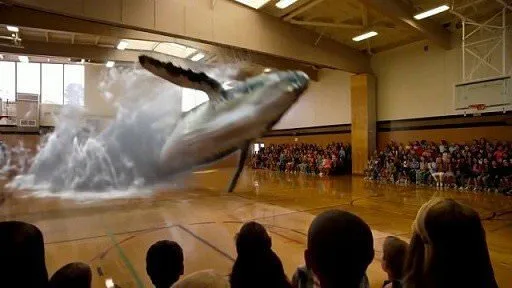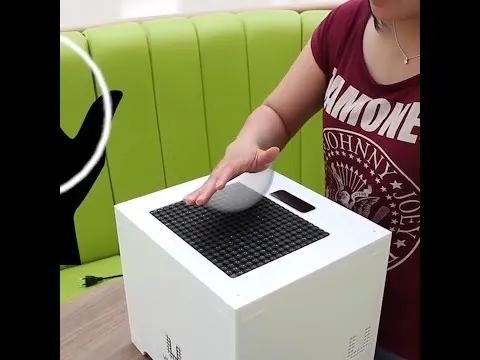Introduction
In my last science post, we talked about Holographic projections in passing. The truth is; the one that was mentioned was the 3D hologram, which we all may have known about. But do you know that other dimensions can be incorporated into holograms to make them more realistic? Okay now you're knowing. Remember when I told you that the Virtual World could meet up with the True Reality; this could be one of it - and now it's possible to feel (touch, smell, sense) virtual projections. Gone are the days where holograms only exist in our visual perceptions. What can't emerging technology do?

[Image Source: Screenshot from YouTube Video. Author: Euclideon Holographics. 2:06Minutes from start]
The entirety of the known "True Reality" (or maybe almost the entirety) is represented in Three Dimension (3D). But here; we ain't talking only about the real world, but also the virtual reality. But for easier understanding, I would just touch briefly on what 3D projections are, at least for the uninitiated to flow along. Before now; for every mention of the term "hologram", it was believed that it is basically a 3D projection. Well, at that time, they were correct, but with the emergence of advanced technology, many things have changed. I know some may have already thought that "3D hologram" is a tautology, and I would only need to say "Hologram" without adding the "3D" - because of the belief that hologram is a 3D projection. Well, for the reason that other types of hologram have arisen, it is imperative to distinguish between them.
Brief overview of 3D holograms and the likes
Putting it in a layman's tem; any projection made from a video or picture source which floats freely in mid-air without superimposing on any surface can be called hologram. Putting it differently; it is the dispersion of beams of light in mid-air, which can be seen with the unaided eyes. In the traditional holograms we're familiar with; which is 3 Dimensional by nature; you can view the projections from every side and from all angles, which is a form of realism. But the truth is; it only exists in our visual perception. That is; only our eyes can make interactions with them - you cannot touch them nor can you feel them (as a matter of precision; you can walk pass them without even feeling a damn thing).
And just so you would know; seeing through these projections without feeling them has removed some elements of realism from them, and that is why some steps were taken, and the idea of 4D came to be. The extra "D" there; is the time factor. So by inference, A 3D projection with an added feature of time manipulation and time movement is the 4D. But even at that, some parameters are still lacking - then the big guy arrived on the scene.

[Image Source: Flickr. Author: Brother UK. CC BY 2.0 Licensed]
Arrival of 7D holograms
I told you that "time" is lacking in the 3D holograms right? Okay not just that, even dimensional angles like: Depth angle and intensity. But here, every of these are put into consideration; including the touch sensation. Yes you heard me right; you can literarily feel and touch the 7D holograms. Don't worry, you would get to know how. So by summation, the parameters covered by the 7D hologram include: `3 Dimension (which indicates space and position), plus an extra dimension for time, plus 2 extra ones for the dimensional angles (relating to intensity and depths; which is where the touch perception comes into play). Plus the extra dimension for an added light perception (so it would be visible even in an absolutely dark environment and also in the presence of light). Summing up all these parameters, you would get "7".
Before I continue, it is worthy to note that holographic projections are also incorporated into the technology of Mixed Reality that I made mention of in my last science post; which combines the technology of both Augmented Reality and the Virtual Reality as a single whole platform. Now some may ask; how da heck can you touch a holographic projection? Here we go:
Touching Projections
A particular study; as stated in this report; was done by the researchers at the Bristol University, and they came up with the idea of incorporating ultrasonic vibrations into holograms. These vibrations create a haptic imaging of the projection - which can be felt when it comes in contact with the body. These sensation created by the haptic imaging is a resultant effect of the ultrasonic vibrations being projected from the same hologram source. This type of 7D projection is called 7D Haptic Hologram. Maybe you need to take a look at this YouTube video for a little idea of how this can be done.
[Video Author: Futurism 1.0]
But as it were, the realism in this projection can further be enhanced by selectively dispersing the projection in an oil medium; thus making it more real, and almost indistinguishable from a real object. Ain't it awesome that we can now feel virtual objects? And again, to increase the interaction between us and these virtual imaging, there is need for the responsive type of Augmented Reality to be added, but more than that, there are other technologies that can be incorporated too.
Take for example; the Digital Scent Technology (Electronic Nose) can be added to further increase the realism - this is the technology that simulates the functions of the biological nose in a mechanical way. By adding this feature, the scent of the real object can be replicated also in the virtual object. For instance; in a movie theatre that works on holographic projections; when a scene is displayed (like an aquatic scene where a shark devours other animals) the characteristic smell of blood would also be simulated by the digital scent technology and it would feel like the cannibalism is happening in real life - because you would perceive the smell of blood; but all these are just simulations.

[Image Source: Screenshot from YouTube Video. Author: Eloheem Son. 3Seconds from start]
Not only in the movie theatre, the 7D haptic hologram can find practical applications in other aspects of our lives: Take the educational sector for example; like I mentioned in my last post; Imagine a virtual classroom scenario where both the lecturers and the classmates are holographically projected and simulated - but with the added haptic technology, these holograms can be felt and interacted with. That is; the lecturer would be teaching at a particular location and would be projected to you in another location; sound's unbelievable right?
Even in the military, haptic image of a soldier can be holographically projected into the camp of the enemies and would be disguised by CGI (Computer Graphic Imagery) to look like their own soldier, so they can monitor the camp and look for loopholes - spying with holograms... what a time to exist in. Even in gaming, this technology can find applications too, and would make the gamer appear like they are physically interacting with the gaming environment, and every punch and blow would be felt in reality. Now that's the idea. You wouldn't be wrong to infer that the virtual world has almost merged with the true reality.
Conclusion
We may have been aware of the technology of 3D, but going ahead of that, other features can be added to enhance the realism in them, and that's exactly what we have seen in the technology of 7D holographic technology. Maybe with time, other dimensions can be added too.
Thanks for reading
References for further reading:


Credit: @gtg
